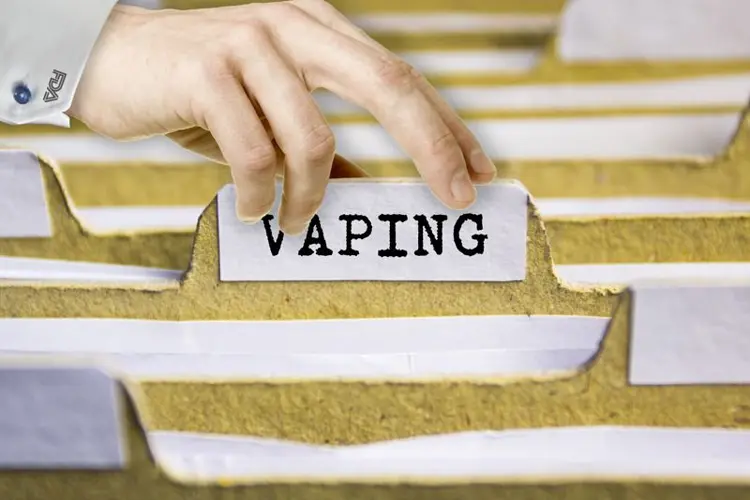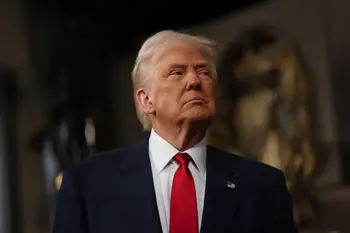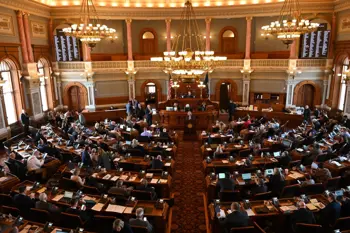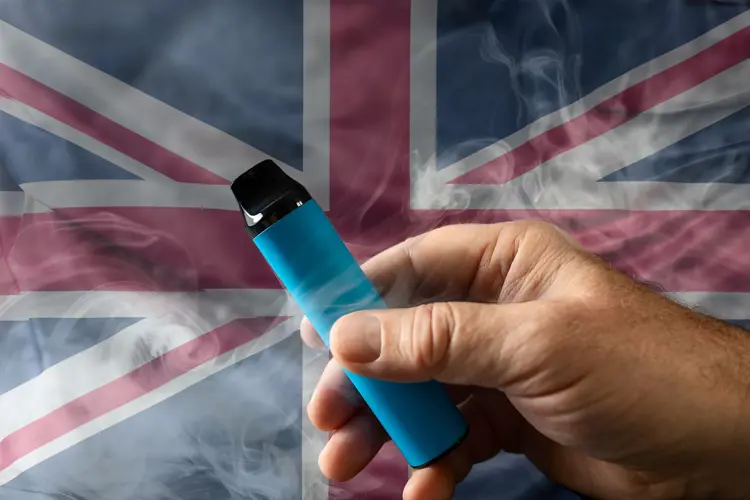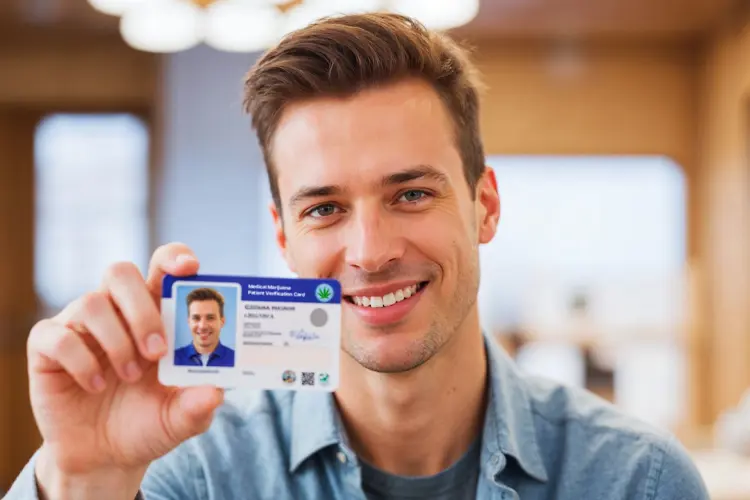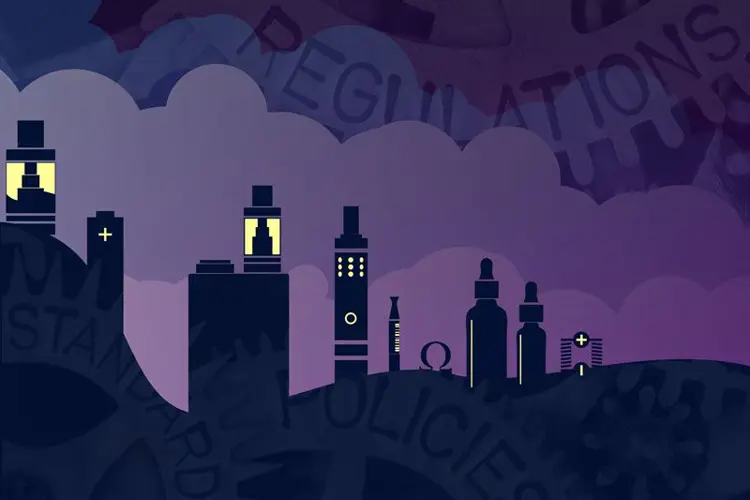Probably no single event has rocked the vaping world like the announcement of the FDA Deeming Rule on May 5, 2016. The Deeming Rule is the regulation that gives the FDA authority over vapor products.
The first version was a long document—499 double-spaced pages—and as readers made their way through it, what had been rumored became reality: the FDA would impose a hard stop on the independent vaping industry two years after the rule took effect on Aug. 8, 2016. The agency would require submission of complex and expensive applications to prove that existing products were “appropriate for the protection of public health.” And there was no assurance that those applications would be approved.
The only products that would be spared the process of “premarket approval” were those that had been on the market unchanged since Feb. 15, 2007, the so-called predicate date named in the 2009 Family Smoking Prevention and Tobacco Control Act. No predicate vaping products existed; they all arrived in the United States after that date. The agency didn't offer specific product standards for manufacturers. There was no list of harmful ingredients that would be prohibited, no nicotine limits, and no rules that would make products safer for consumers.
The FDA admitted that the regulations would cause more than 99 percent of vaping manufacturers to “exit the market,” and that the cost of a Premarket Tobacco Application (PMTA) would be higher than all except a few companies (almost exclusively Big Tobacco companies) would be able to afford.
In this article, we’ll examine the origins of the FDA’s vaping regulations, especially the forces that shaped the Deeming Rule and its implementation.
The Tobacco Control Act: FDA gains regulatory authority
The Food and Drug Administration's mandate to regulate vapor products had its origin in the Family Smoking Prevention and Tobacco Control Act (usually called the Tobacco Control Act, or TCA). The legislation—which was created with the cooperation of tobacco company Philip Morris and Campaign for Tobacco-Free Kids president Matthew Myers—passed Congress with bipartisan support and was signed into law on June 22, 2009 by President Barack Obama.
The act gave the FDA regulatory authority over tobacco products like cigarettes and smokeless tobacco. It also created a new FDA office, the Center for Tobacco Products (CTP), which would be completely funded by user fees from tobacco companies. (The CTP collected more than $700 million a year in user fees in 2019 and 2020.)
The Tobacco Control Act “grandfathered” cigarettes and other tobacco products already available for sale, but created difficult barriers to any new products that might attempt to enter the market. The act effectively protected existing cigarette brands from future competition—not just from other cigarettes, but also from low-risk nicotine products that might threaten the tobacco companies down the road.
One skeptical senator called it the "Marlboro Protection Act."
In addition to existing products, the act gave the FDA the power to “deem” any new product containing “nicotine made or derived from tobacco” to be a tobacco product. That meant that the FDA could grant itself the power to regulate any product it decided met the standards laid out in the TCA without further oversight from Congress.
Sottera vs. FDA: NJOY saves the vaping industry
Although the FDA Center for Tobacco Products received its mandate to regulate tobacco products in 2009, it would be another seven years before the agency granted itself authority over e-cigarettes. However, the FDA had begun going after the new products even before the Tobacco Control Act became law.
It was the FDA Center for Drug Evaluation and Research (CDER), that struck first at the tiny industry that was just beginning to build a U.S. vaping market in early 2009. According to CASAA’s historical timeline, the agency directed customs officials to turn away shipments of e-cigarettes from China, on the basis that they were unapproved drug delivery devices.
In April of 2009, e-cig manufacturer Smoking Everywhere filed a lawsuit against the FDA, and soon after Sottera (later known as NJOY) joined the suit. The companies claimed the FDA had no jurisdiction over the products because they were tobacco products, not drug delivery devices.
The Tobacco Control Act “grandfathered” all cigarettes already available for sale, but created difficult barriers to any new products that might attempt to enter the market.
Even after the Tobacco Control Act was passed in June 2009 and the agency could have regulated e-cigs as tobacco products, the FDA stuck with its original legal strategy. As it turned out, that was a mistake, because in January 2010 U.S. District Court Judge Richard Leon issued an opinion in favor of the vaping manufacturers, and an injunction preventing the FDA from seizing their imported products.
Eleven months later, the federal appeals court upheld Judge Leon’s decision, ruling that unless therapeutic claims were being made, the FDA could only regulate e-cigarettes as tobacco products. The FDA did not appeal further, and in April 2011 announced it would regulate e-cigs as tobacco products.
It would be three more years before the FDA explained how it intended to implement vaping regulations. During that time, the vaping industry experienced explosive growth and rapid innovation, as millions of smokers discovered that these devices could be a viable alternative to cigarettes.
2014: first look at FDA's deeming regulations
Between 2011 and 2014, the FDA was pushed hard to issue deeming regulations. Pressure came from Democratic members of Congress, and from private special interest groups like the American Cancer Society, Campaign for Tobacco-Free Kids, American Academy of Family Physicians, and the heart and lung associations.
E-liquid flavors were the primary target of anti-vaping activists. Banning "characterizing flavors" in cigarettes had been one of the new Center for Tobacco Products' first regulatory acts, and anti-tobacco advocates thought fruit and candy flavors should be prohibited in combustion-free vaping products too.
Also weighing in on the call for regulation was Marlboro manufacturer Altria (formerly known as Philip Morris, the company whose lawyers had helped write the Tobacco Control Act). Altria told the FDA that manufacturers of vaping products should be subject to the same rules and restrictions that cigarette producers were.
On April 24, 2014 the FDA released its proposed regulations. The proposed rule would, if finalized, eliminate almost all of the vaping industry (aside from some products made by Big Tobacco) by requiring manufacturers to submit Premarket Tobacco Applications (PMTAs) for all existing products within two years after the final rule was issued.
The regulations required a PMTA for each “component or part,” extensive studies and toxicological testing that would possibly cost millions for each product submitted, and offered no specific product standards. The FDA said each product would have to show that it benefited public health—the health of the whole U.S. population, not just individual vapers and smokers—which would require studies on uptake by non-smokers and ex-smokers too. The FDA expressed no concerns about a black market being created.
Banning ``characterizing flavors`` in cigarettes had been one of the new Center for Tobacco Products' first regulatory acts, and anti-tobacco advocates thought fruit and candy flavors should be prohibited in combustion-free vaping products too.
The FDA gave the public 75 days (which was later extended) to make comments, and then set about creating a final rule. The comment period is often a formality, with the agency winding up right back where it intended to be all along. One comment received by the agency offered tips on how the FDA could hamstring the developing industry.
The comment from RAI Services (RJ Reynolds, manufacturer of Camel cigarettes and Vuse e-cigarettes) was essentially a blueprint for the elimination of the messy independent vaping industry. The cigarette maker suggested that the FDA should ban outright “open-system” vaping products (the separate components that fit together in different combinations, like bottled e-liquid, mods, atomizers, and coils).
“Unlike closed-system products,” said Reynolds, “open-system products are highly customizable. As a result, there is no way to adequately evaluate how such a product will work or to establish whether consistency of product composition and quality can be maintained.”
The cigarette manufacturer then went on to explain how vape shops could be defined as manufacturers, since many mixed e-liquids on site and assembled hardware components into finished products. RJ Reynolds, whose cigarettes were grandfathered onto the market by the Tobacco Control Act, patiently instructed the regulatory agency how to get rid of its new competitor with burdensome and costly regulations. And that's what the FDA did.
August 8, 2016: the Deeming Rule takes effect
On May 5, 2016 the FDA announced the finalized Deeming Rule. It was a shock to vapers and small vape businesses, who realized that the FDA hadn’t listened to their heartfelt pleas to preserve these products, but instead had systematically constructed an airtight trap to strangle the disruptive technology and hand it to the gigantic tobacco companies it was built to replace.
The agency had constructed a maze of regulatory hoops for small business owners. And the FDA assured it wouldn’t have to deal with a mountain of PMTAs for hardware by demanding that all components and parts applications would have to show how each device might work with any other component it could be combined with. For example, if your company wants to sell an atomizer with a 510 connection, you would have to test the device with every other product it could be attached to, and every e-liquid it could possibly be used to vaporize. Each separate combination of thousands of devices would have to be proven "appropriate for the protection of public health."
The FDA’s “Guidance for Industry” was 58 pages long. That document was intended as an instruction manual for preparing PMTAs, but it didn’t suggest a single technical standard that would be required, or explain what would make a product acceptable or unacceptable to regulators. Business owners were left to guess what they had to do to receive marketing authorization from the agency.
Manufacturers were given two years to continue selling products. At the end of that period, on Aug. 8, 2018, products without submitted PMTAs would have to be removed from the market or risk FDA enforcement.
RJ Reynolds, whose cigarettes were grandfathered onto the market by the Tobacco Control Act, patiently instructed the regulatory agency how to get rid of its new competitor with burdensome and costly regulations.
Note to readers: compliance dates for the various requirements of the Deeming Rule have changed many times since its 2016 publication. Some dates were changed by the FDA for various reasons, and some were imposed by court rulings. We originally tried to list every original date and every change in a timeline, but it became unwieldy. You can see the original dates and some generations of the changes in archived versions of this article.
In fact, the FDA suggested that closed-system devices would be more likely to win approval. The agency so feared the confusing and probably impossible-to-regulate market of tanks, mods and bottled e-liquid that it unknowingly walked itself right into the situation it now faces, with at least half the market consisting of small and inexpensive pod vapes.
There was no immediate flavor ban, but the agency left open the possibility that it could come at any time. The Deeming Rule, CTP director Mitch Zeller explained, was "a foundational regulation." It was just setting the beginning. Restrictions on flavors might be added in the future. (As it turned out, the FDA had intended to ban flavors, but was prevented by the Obama White House.)
Among the newly deemed products—which included not just vapor products, but also cigars, hookah, pipes and pipe tobacco—only manufacturers of pipe tobacco and cigars would be required to pay tobacco company “user fees” to the FDA. But the agency still considered makers of tobacco- and combustion-free vaping products to be “tobacco manufacturers.”
The deeming regulations would take effect on Aug. 8, 2016, and these provisions were enacted immediately:
- No new products can enter the market unless authorized by an FDA marketing order
- Retailers that mix or prepare e-liquids, or create or modify devices, are considered tobacco product manufacturers. All manufacturers must comply with the specific legal requirements FDA has created for them
- Retailers may only sell to customers age 18 or older (states may have stricter age requirements), and must check photo ID of everyone under age 27. Online sales require proper age verification
- Free samples are not allowed
- Selling products in a vending machine is not allowed, unless it is in a facility where minors are not permitted at any time
- FDA begins enforcing the prohibition on “misbranding,” including false and misleading claims on labels and advertising. Manufacturers and retailers are not allowed to make claims to customers in advertising or public statements that products are less harmful or pose fewer risks than other tobacco products. Such claims require a modified risk tobacco product (MRTP) order
Legal and legislative challenges to the Deeming Rule
Even before the FDA's vaping regulations had been announced, there was a U.S. House bill, introduced by Oklahoma Republican Tom Cole, that would grandfather existing vaping products onto the market without premarket approval. HR 2058 would have preserved the vaping devices and e-liquids that were on the market when the Deeming Rule went into effect. The bill didn’t go anywhere, but Cole kept at it, promoting variations on his bill for the next two years.
Immediately after the announcement of the Deeming Rule in May, Republican Sen. Ron Johnson of Wisconsin sent a letter to FDA Commissioner Robert Califf, demanding answers about the regulations. He sent follow-ups too, although he never received a substantial reply. After his re-election in November 2016, Johnson's interest seemed to wane. He never sponsored Senate legislation to help the vaping industry.
In 2017, Rep. Cole co-sponsored a bill with Georgia Democrat Sanford Bishop, a moderate with a large e-liquid manufacturer in his district. The “Cole-Bishop bill” was supported by vaping industry and consumer advocates as a vital first step to undo the damage of the Deeming Rule. However, despite Republican majorities in both houses of Congress and a Republican president, the bill never received a vote.
Since the Deeming Rule had punted on an outright flavor ban, groups like the Campaign for Tobacco-Free Kids made flavors the tip of the anti-vaping propaganda spear.
California Republican Rep. Duncan Hunter—like Sen. Johnson, an early Trump supporter—introduced a bill in 2017 that would have mandated reasonable FDA regulation of the vapor industry. However its supporters (mainly e-liquid standards organization AEMSA) decided to announce that they wouldn’t back Cole-Bishop, and instead went all in for the Hunter bill. That caused friction with longtime advocates, who believed the industry disunity confused legislators. In any case, Hunter didn’t seem interested in promoting his own legislation or recruiting co-sponsors, and the bill died quietly.
Immediately after the May deeming announcement, several lawsuits were filed against the FDA. The two best known actions were initiated by Halo e-liquid manufacturer Nicopure Labs and the Right to be Smoke-Free Coalition, a group of state and national vaping industry groups. The Nicopure and R2BSF lawsuits were combined by the court, and in July 2017 U.S. District Court Judge Amy Jackson Berman ruled against the vapor industry plaintiffs. The decision against Nicopure was upheld on appeal.
Three lawsuits were filed in federal courts around the country in January 2018 by the conservative/libertarian Pacific Legal Foundation, on behalf of several small vaping businesses. These actions were also combined into a single lawsuit, and lost in both the district court and in the federal appeals court. The plaintiffs petitioned the Supreme Court for a hearing, but were denied in May 2021.
Another lawsuit, by Mississippi-based Big Time Vapes, challenging the FDA on rather unique grounds (the doctrine of nondelegation) also failed in the lower courts and petitioned the Supreme Court to be heard. It too failed in early 2021.
Scott Gottlieb takes over at FDA
After the surprise election of Donald Trump in November 2016, the vaping industry saw a glimmer of hope for the future. And when Trump named former Bush FDA official and venture capitalist Scott Gottlieb, M.D., to head the FDA, the many thought the future once again looked bright.
Gottlieb took office barely a year after the announcement of the Deeming Rule. He had worked at the conservative American Enterprise Institute, which is generally supportive of vaping, and also served on the board of a vaping company (Kure, a vape shop franchiser), which had earned him some skeptical questions during his Senate confirmation hearing.
In remarks to FDA employees on his first day, he spoke words vapers never expected to hear from the leader of the FDA. “We need to redouble efforts to help more smokers become tobacco-free,” said the new commissioner. “And, we need to have the science base to explore the potential to move current smokers—unable or unwilling to quit—to less harmful products, if they can’t quit altogether. At all times, we must protect kids from the dangers of tobacco use.”
Then, in a speech on July 28, 2017, Gottlieb announced a major initiative to completely remake the American nicotine product landscape. Gottlieb said the FDA would begin rulemaking to reduce nicotine in cigarettes below addictive levels. And because millions of smokers would need safer nicotine products to replace their cigarettes, Gottlieb said that e-cigarettes were an important part of his “comprehensive plan.”
Gottlieb said the FDA would postpone the 2018 PMTA submission deadline for four years, until Aug. 8, 2022. That would allow time for the FDA to create workable premarket review standards. He also said while applications were being reviewed, products could remain on the market indefinitely (previously they were only to be allowed to remain for one year, even if the FDA had not determined their eligibility).
The commissioner also announced that the agency would begin the rulemaking process to address “kid-appealing flavors” in tobacco products, including in e-liquids. And he promised foundational rules that would make the premarket review process transparent and predictable, and guidance on “known risks” in vapor products like batteries.
The vaping industry finally had a reason to be optimistic about the future, and many thought Gottlieb could be the savior that manufacturers and retailers had hoped for. But that would change.
JUUL and the teenage “vaping epidemic”
The opponents of vapor products had long beaten the drum of “child-appealing” flavors. In fact, the accusation that flavors (other than tobacco) were especially attractive to youth had been with vaping almost since the beginning, well before Lorillard Tobacco bought Blu in 2012—Big Tobacco’s entry into the e-cigarette market.
Since the Deeming Rule had punted on an outright flavor ban, groups like the Campaign for Tobacco-Free Kids made flavors the tip of the anti-vaping propaganda spear. They frequently sent letters to Congress (and issued press releases), and even created dedicated websites to push the anti-flavor narrative. For TFK and the other tobacco control groups, “candy-flavored tobacco” allowed them to tie vaping to combustible tobacco products (like “little cigars”) in a way nothing else could. Because the FDA had banned flavored cigarettes (except menthol), they argued that “characterizing flavors” should also be prohibited for other tobacco products, including in bottled e-liquid.
The independent vaping industry—manufacturers of the products found in thousands of vape shops—fears flavor restrictions above all other regulation, since flavored e-liquid is the primary driver of their sales. The anti-vaping activists know that the vapor industry would crumble without the almost endless variety of e-liquid flavors. It's not an exaggeration to say that flavors are the vaping industry.
The agency announced a $60 million ad campaign featuring a video showing computer-generated bugs crawling under the skin of vaping teenagers’ faces.
There were attempts to create additional vaping bogeymen too, as the groups aligned against vaping threw ideas at the wall to see what would stick. Dripping had its moment in the spotlight, with an alarming study portraying it as a dangerous fringe practice, and newspaper stories to drive the public panic that activist researchers hoped would follow. Battery explosions made the news regularly, although an FDA study of battery mishaps showed that such events were easily avoidable and not especially common. Old rodent studies were brought out of mothballs to show a potential link between adolescent nicotine use and compromised brain development.
But in mid-2017 anecdotal stories of high schools students using the JUUL—a tiny, low-power pod device that uses high-strength e-liquid—started bubbling in the northeast, especially in Massachusetts. By October, New York Sen. Chuck Schumer became the first national politician to use JUUL as a pretext to ask the FDA to enforce the Deeming Rule’s PMTA requirement immediately. Schumer issued an alarming press release, held a news conference, and sent a letter to Commissioner Gottlieb.
Schumer used talking points that would become very familiar over the next year. JUUL is small and easy to hide, he said. Kids are using it in school, and teachers don’t notice because it looks like a USB flash drive. One JUUL pod contains as much nicotine as a whole pack of cigarettes! And JUUL flavors—including Fruit Medley, Mango, and Creme Brulee—were, of course, "child-appealing."
Tobacco control groups jumped onto the JUUL train. Newspaper articles and TV spots began appearing regularly, often using as examples the same few New England schools the earliest articles had described, and the same handful of drug treatment specialists as experts. The panic spread and multiplied. By March 2018, when the FDA issued its advanced notice of proposed rulemaking for flavors, JUUL fever had overtaken the vaping conversation. And since flavors were supposedly a big part of JUUL’s appeal to youth, the anti-vaping experts managed to fit both issues into every news story they were quoted in. The talking points Sen. Schumer had used in October were now ubiquitous. Teen nicotine use had become a national emergency!
During the 10 years since Congress gave the FDA regulatory authority over tobacco products, the agency has never stated clearly that vaping is safer than smoking.
On April 19, 2018, the major non-profit groups aligned against vaping launched a coordinated maneuver to grab headlines and mark JUUL as the target of what they hoped would be a national demand for action. On that day, Truth Initiative published a study that purported to prove the threat JUUL posed to children; six tobacco control organizations sent a letter demanding that the FDA take action against JUUL and reverse its delay of the premarket review process; and 11 Democratic senators sent letters to the FDA and to JUUL Labs with similar demands.
Under pressure, Commissioner Gottlieb began shifting his focus to teen nicotine use. By summer, he was using the focus-grouped term “epidemic” to describe the JUUL fad, and in September the FDA chief threatened to ban flavors and possibly remove products from the market, based on unpublished preliminary data from the 2018 National Youth Tobacco Survey. The agency announced a $60 million ad campaign featuring a video showing computer-generated bugs crawling under the skin of vaping teenagers' faces.
Gottlieb now owned the epidemic. On Nov. 15, the commissioner announced a ban on vape flavors (other than tobacco, menthol and mint) except in adult-only stores, like vape or tobacco shops. That meant that adults who don’t live near a vape shop would have no retail access to the most popular vaping products. Gottlieb reminded the public that the FDA was still planning rules for flavors too. He also promised new guidelines for online sales that would require “heightened” age verification standards.
Approaching the PMTA deadline, FDA focuses on flavors
In March 2019, with his plan to reset the nicotine landscape all but forgotten, Gottlieb announced he would leave the FDA in April. Less than three months later, he accepted a position on pharmaceutical giant Pfizer’s board of directors.
A few weeks after Gottlieb’s departure, Judge Paul Grimm of the Maryland U.S. District Court ruled that Gottlieb’s postponement of the PMTA deadline was illegal because the agency did not follow the proper rulemaking steps. The deadline was thrown out by the court, and Judge Grimm imposed a new deadline: May 11, 2020. (The deadline was later changed to Sept. 9 because of COVID-19 challenges.) Judge Grimm agreed that applicants filing on time would receive a one-year extension to continue selling while the FDA considered their applications; and the agency was given the ability to grant additional extensions on a case-by-case basis “for good cause.”
While e-liquid companies worried about the impending September deadline, mass-market manufacturers faced their own problems with the FDA. After months of Trump administration wavering, the FDA announced in January 2020 that the agency would no longer use its enforcement discretion to allow pod- and cartridge-based products in flavors other than tobacco and menthol to remain on the market.
That meant that the most popular convenience store vape brands, like JUUL, NJOY and Vuse, would only be available in the least popular flavors until (and if) the flavored products received marketing authorization through the PMTA process. When it came time to submit their first PMTAs, Juul Labs submitted only tobacco and menthol flavors, probably assuming that the time was not yet right for the FDA to risk a political firestorm by approving the sale of JUUL flavors. (RJ Reynolds did submit PMTAs for some flavored Vuse products.)
During the 12 years since Congress gave the FDA regulatory authority over tobacco products, the agency has never stated clearly that vaping is safer than smoking.
Few observers believed that small manufacturers would be able to comply with the stringent and expensive PMTA pathway. But when the Sept. 9, 2020 deadline rolled around the FDA was surprised with millions of submissions from more than 500 applicants. While many of those applicants were probably just hoping for the extra year on the market granted to on-time applicants, some companies—including some small ones—approached the process with the intention of getting marketing authorization.
As the one-year grace period for on-time applicants approached its end on Sept. 9, 2021, the FDA was under constant pressure to discard its mandate to assess each product individually and instead issue a blanket ban of flavored products. Members of both houses of the Democratic-majority Congress called hearings and wrote letters to the FDA demanding flavored products be banned, as did a large group of state attorneys general. Tobacco control groups pulled out all the stops to keep the PMTA deadline in the news, focusing heavily on JUUL.
With less than two weeks to go before Sept.9, the FDA issued marketing denial orders to three small manufacturers. In its announcement, the agency indicated that e-liquids and closed-system devices containing flavors other than tobacco would be required to show “product-specific” scientific evidence that their liquids and devices “demonstrate enough of a benefit to adult smokers that would overcome the risk posed to youth.” The FDA went on to say that such evidence “would likely be in the form of a randomized controlled trial or longitudinal cohort study”—research costing millions of dollars, and out of reach for small vape manufacturers—and that the agency would not bother to fully review applications that didn’t contain such evidence.
Most in the independent vaping industry took the announcement to mean that flavored e-liquid would be shut out of the PMTA sweepstakes.
The vaping future remains cloudy
During the years since Congress gave the FDA regulatory authority over tobacco products, the agency has never stated clearly that vaping is safer than smoking. However, vaping has grown rapidly—despite getting the cold shoulder from American public health authorities—and expanded around the world. While some countries like India have chosen to give in to pressure from powerful tobacco control interests and ban vaping products, others like the U.K. have allowed and even encouraged vaping as a safer choice for smokers.
Whether the FDA admits its error in attempting to prohibit and restrict products that could save millions of lives, or instead continues to push back against tobacco harm reduction, the vaping genie is out of the bottle. It will be impossible to put it back. To save its own credibility and authority, the FDA will at some point in the near future have to acknowledge vaping as a low-risk alternative to smoking, or wind up presiding over an ineffective prohibition and a robust black market.
President Trump promised during his election campaign to “save vaping," but his administration has undermined that goal at every turn.
The U.S. disposable vape market has grown to $2 billion in annual sales, although nearly none of the products are authorized by the FDA.
More than 30 bills that would impose severe restrictions vaping consumers’ product choices remain active in U.S. state legislatures.
The Freemax REXA PRO and REXA SMART are highly advanced pod vapes, offering seemingly endless features, beautiful touchscreens, and new DUOMAX pods.
The OXVA XLIM Pro 2 DNA is powered by a custom-made Evolv DNA chipset, offering a Replay function and dry hit protection. Read our review to find out more.
The SKE Bar is a 2 mL replaceable pod vape with a 500 mAh battery, a 1.2-ohm mesh coil, and 35 flavors to choose from in 2% nicotine.

